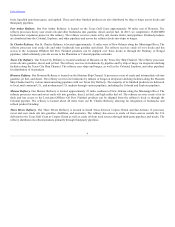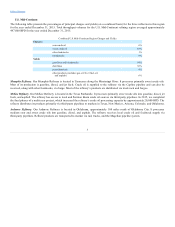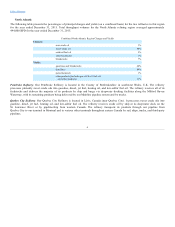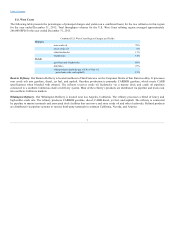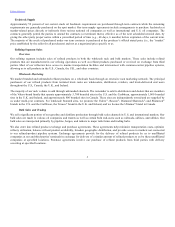Valero 2015 Annual Report Download - page 16
Download and view the complete annual report
Please find page 16 of the 2015 Valero annual report below. You can navigate through the pages in the report by either clicking on the pages listed below, or by using the keyword search tool below to find specific information within the annual report.
Table of Contents
assessment or remediation efforts at our facilities as well as at formerly owned properties or third-party sites where we have taken
wastes for disposal or where our wastes have migrated. Environmental laws and regulations also may impose liability on us for the
conduct of third parties, or for actions that complied with applicable requirements when taken, regardless of negligence or fault. If we
violate or fail to comply with these laws and regulations, we could be fined or otherwise sanctioned.
Because environmental laws and regulations are becoming more stringent and new environmental laws and regulations are
continuously being enacted or proposed, such as those relating to GHG emissions and climate change, the level of expenditures
required for environmental matters could increase in the future. Current and future legislative action and regulatory initiatives could
result in changes to operating permits, material changes in operations, increased capital expenditures and operating costs, increased
costs of the goods we sell, and decreased demand for our products that cannot be assessed with certainty at this time. We may be
required to make expenditures to modify operations or install pollution control equipment that could materially and adversely affect our
business, financial condition, results of operations, and liquidity.
For example, the U.S. Environmental Protection Agency (EPA) has, in recent years, adopted final rules making more stringent the
National Ambient Air Quality Standards (NAAQS) for ozone, sulfur dioxide, and nitrogen dioxide, and the U.S. EPA is considering
further revisions to the NAAQS. Emerging rules and permitting requirements implementing these revised standards may require us to
install more stringent controls at our facilities, which may result in increased capital expenditures. Governmental regulations regarding
GHG emissions–including so-called “cap-and-trade” programs targeted at reducing carbon dioxide emissions–and low carbon fuel
standards could result in increased compliance costs, additional operating restrictions or permitting delays for our business, and an
increase in the cost of, and reduction in demand for, the products we produce, which could have a material adverse effect on our
financial position, results of operations, and liquidity.
In addition, in 2015, the U.S., Canada, and the U.K. participated in the United Nations Conference on Climate Change, which led to the
creation of the Paris Agreement. The Paris Agreement will be open for signing on April 22, 2016, and will require countries to review
and “represent a progression” in their intended nationally determined contributions (which set GHG emission reduction goals) every
five years beginning in 2020. Restrictions on emissions of methane or carbon dioxide that have been or may be imposed in various
U.S. states or at the U.S. federal level or in other countries could adversely affect the oil and gas industry.
Finally, some scientists have concluded that increasing concentrations of GHG emissions in the Earth’s atmosphere may produce
climate changes that have significant physical effects, such as increased frequency and severity of storms, droughts, and floods and
other climatic events. If any such effects were to occur, it is uncertain if they would have an adverse effect on our financial condition
and operations.
.
A significant portion of our feedstock requirements is satisfied through supplies originating in the Middle East, Africa, Asia, North
America, and South America. We are, therefore, subject to the political, geographic, and economic risks attendant to doing business
with suppliers located in, and supplies originating from, these areas. If one or more of our supply contracts were terminated, or if
political events disrupt our traditional crude oil supply, we believe that adequate alternative supplies of crude oil would be available, but
it is possible that we would be unable to find alternative sources of supply. If we are unable to obtain adequate crude oil volumes or are
able to obtain such volumes only at unfavorable prices, our results of operations could be materially adversely affected, including
reduced sales volumes of refined products or reduced margins as a result of higher crude oil costs.
13



